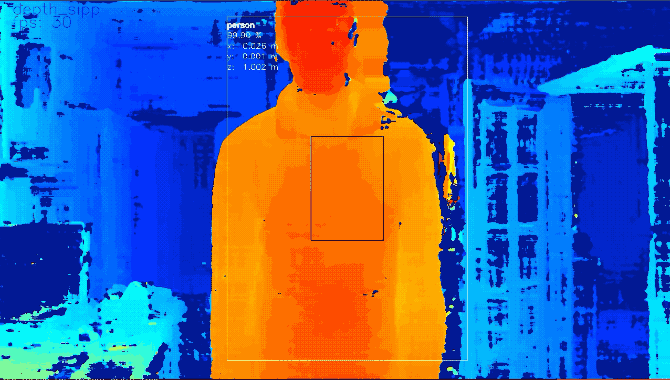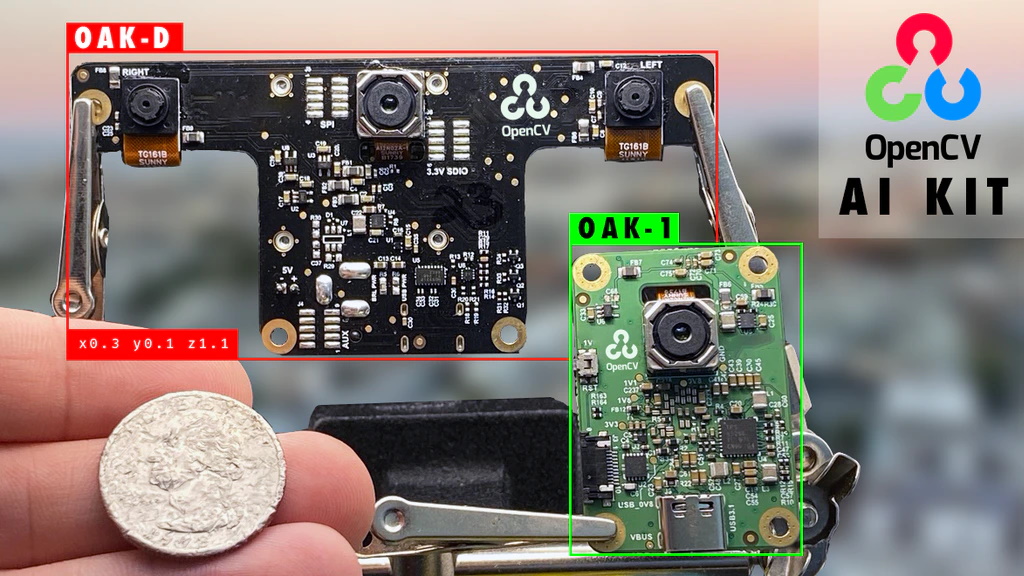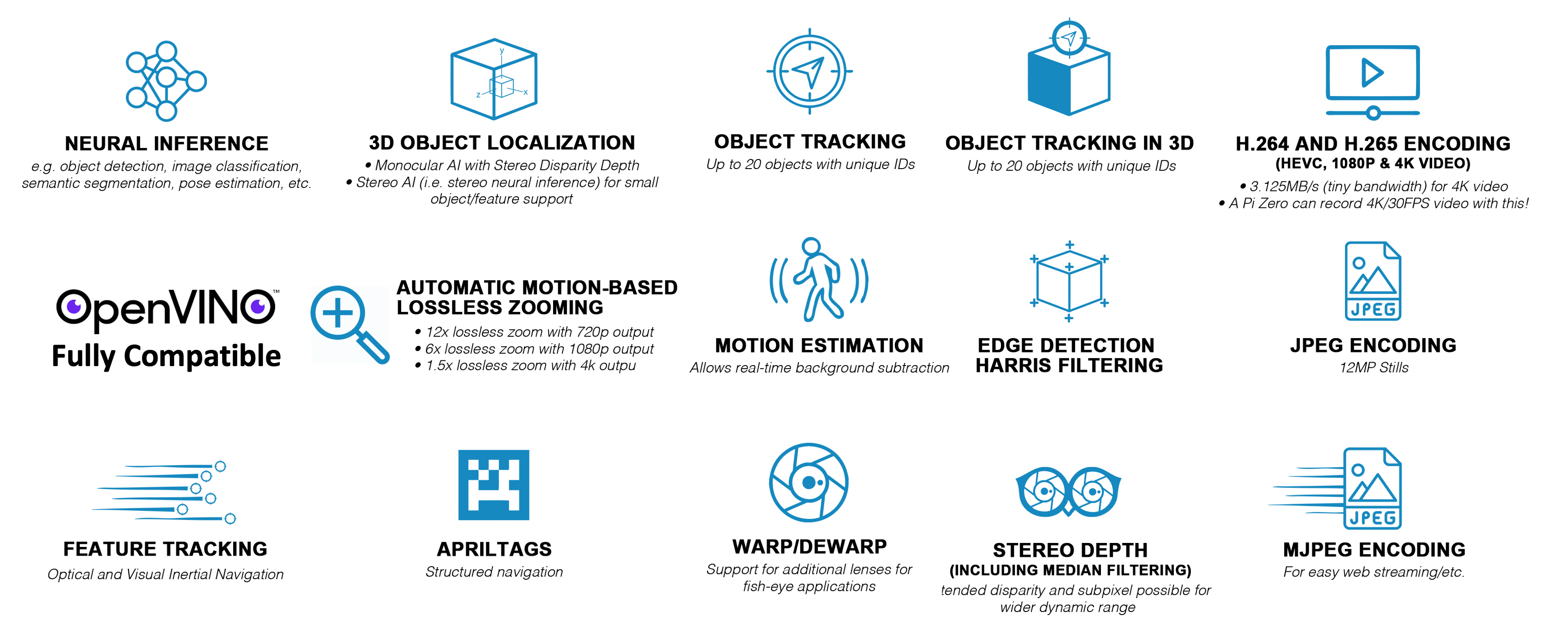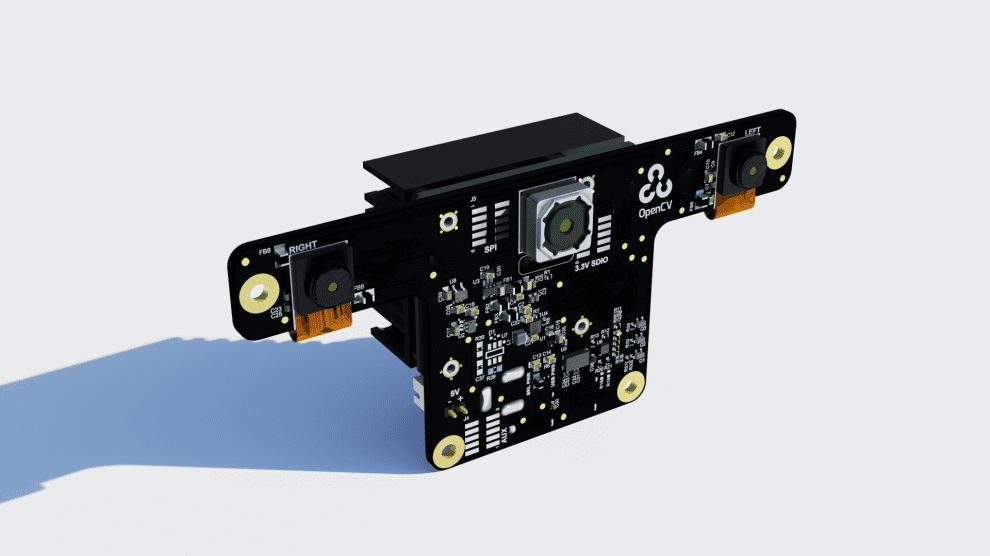A new gadget called the OpenCV AI Kit, or OAK, looks to replicate the success of Raspberry Pi and other minimal computing solutions, but for the growing fields of computer vision and 3D perception. Its new multi-camera PCBs pack a lot of capability into a small, open-source unit and are now seeking funding on Kickstarter.
The OAK devices use their cameras and onboard AI chip to perform a number of computer vision tasks, like identifying objects, counting people, finding distances to and between things in frame and more. This info is sent out in polished, ready-to-use form.
Having a reliable, low-cost, low-power-draw computer vision unit like this is a great boon for anyone looking to build a smart device or robot that might have otherwise required several and discrete cameras and other chips (not to mention quite a bit of fiddling with software).

Like the Raspberry Pi, which has grown to become the first choice for hobbyist programmers dabbling in hardware, pretty much everything about these devices is open source on the permissive MIT license. And it’s officially affiliated with OpenCV, a widespread set of libraries and standards used in the computer vision world.
The actual device and onboard AI were created by Luxonis, which previously created the CommuteGuardian, a sort of smart brake light for bikes that tracks objects in real time so it can warn the rider. The team couldn’t find any hardware that fit the bill so they made their own, and then collaborated with OpenCV to make the OAK series as a follow-up.
There are actually two versions: The extra-small OAK-1 and triple-camera OAK-D. They share many components, but the OAK-D’s multiple camera units mean it can do true stereoscopic 3D vision rather than relying on other cues in the plain RGB image — these techniques are better now than ever but true stereo is still a big advantage. (The human vision system uses both, in case you’re wondering.)

The idea was to unitize the computer vision system so there’s no need to build or configure it, which could help get a lot of projects off the ground faster. You can use the baked-in object and depth detection out of the box, or pick and choose the metadata you want and use it to augment your own analysis of the 4K (plus two 720p) images that also come through.
A very low power draw helps, too. Computer vision tasks can be fairly demanding on processors and thus use a lot of power, which was why a device like XNOR’s ultra-efficient chip was so promising (and why that company got snapped up by Apple). The OAK devices don’t take things to XNOR extremes, but with a maximum power draw of a handful of watts, they could run on normal-sized batteries for days or weeks on end depending on their task.
The specifics will no doubt be interesting to those who know the ins and outs of such things — ports and cables and GitHub repositories and so on — but I won’t duplicate them here, as they’re all listed in orderly fashion in the campaign copy. Here’s the quick version:

If this seems like something your project or lab could make use of, you might want to get in quick on the Kickstarter, as there are some deep discounts for early birds, and the price will double at retail: $79 for the OAK-1 and $129 for the OAK-D sound like bargains to me based on their stated capabilities (they’ll be $199 and $299 eventually). And Luxonis and OpenCV are hardly fly-by-night organizations hocking vaporware, so you can back the campaign with confidence. Also, they flew past their goal in like an hour, so no need to worry about that.

